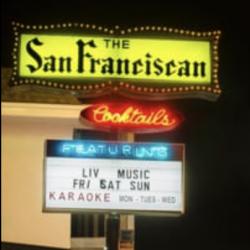Best Guide on How to get your Student Loans Forgiven!
 Your ex may never forgive you, but your Student loan debt will.
Your ex may never forgive you, but your Student loan debt will.
What is Student Loan Forgiveness?
Student loan forgiveness (“nickname for the William D. Ford Direct Loan program which was reformed by Obama) allows for a ‘Broke-ass’ borrower to consolidate all their federal student loans into one new loan, and choose a repayment plan that is more affordable. Your repayment amount and duration before the almighty forgiveness shall be given, is based on your income, family size, and if you work in the Public Service Sector. Depending on which plan you qualify for, after 10, 20, or 25 years, you will be fully relieved of your obligation to pay the remainder of your student loan debt!
Regardless if you owe $15,000 or $150k in student loan debt, after 10, 20, or 25 years of paying your consolidated loan, all of your remaining debt will be forgiven! There are serious caveats to be aware of, such as interest accruing and scam companies who charge hidden fees to stay away from. However, by the end of this article, armed with knowledge and direction, you could be on your way to some life-changing savings!
Types of Plans
1) Income-Based Repayment Plan – Monthly payments are capped at 15% of your discretionary income (the amount of money they make that falls above the federal poverty level), and is readjusted each year based on your income and family size for up to 25 years.
Take, for example, a recent grad who makes $20,000. Because the federal income level within the contiguous United States is $11,490, that means he only makes $8,510 in discretionary income. Under the IBR, you would only have to make payments that were 15% of that $8,510, which equals about $106 a month.
If you are unemployed, you can qualify to ‘pay’ $0 monthly, after 25 years, your loans will still entirely be forgiven.
2) Pay As You Earn Plan – This plan is the IBR’s more attractive younger sibling for those with more extreme financial hardship. This plan guarantees that your monthly student loan payments remain affordable based on your income. You must be a “new borrower” aka didn’t owe any money on any federal student loans as of Oct 7 2011 or received a disbursement after Oct 1 2011.
This plan has the lowest monthly payment amount of the repayment plans that are based on your income and will be forgiven after 20 years (vs IBR’s 25). Monthly payments are capped at 10% of your discretionary income, and readjusted each year based on your income and family size. As with the IBR plan, you must qualify for a partial financial hardship to be eligible. If you are unemployed, and let your provider know, then you pay $0 per month and no penalty.
3) Public Service Loan Forgiveness – This program offers full direct loan forgiveness after 10 years of payments for anyone employed in a widely-defined “public service position.”If you work in the Public Service sector, you can get your monthly loan reduced significantly, and then your debt forgiven after making 120 qualifying payments on those loans while employed full time by certain public service employers.
According to the U.S. Office of Education’s federal student aid website “Any employment with a federal, state or local government agency, entity, or organization or a not-for-profit organization that has been designated as tax-exempt by the Internal Revenue Service (IRS) under Section 501(c)(3) of the Internal Revenue Code (IRC).”

4) Teacher Loan Forgiveness – Are you a teacher in a Low-Income area? If not, you might consider becoming one with the Teacher Forgiveness Program. Up to $17,500 of your federal Stafford loans or the entirety of your Perkins loans can be forgiven in exchange for five consecutive, full-time years as a teacher at certain low-income elementary or secondary schools.
The Silver Lining to Student Loan Forgiveness
CON 1: It’s yearly paperwork: You are required to submit updated info of family size and income to your loan servicer yearly. If not, monthly payments won’t be based on income and unpaid interest will capitalize.
PRO 1: You’ve gotta do taxes anyway. With email and the convenience of the magical interwebs, it takes all of 5 minutes. If I told you, I’d pay you 50% of your loan amount for the time of one email, would you do it? If that 5 minutes per year, cuts your payments in half, then it’s a no-brainer.
CON 2: Only Direct Loans are eligible. If you took a private loan, you’re are shit outta luck.
PRO 2: Most of the loans are direct loans and eligible. So woody-woo-hoo.
CON 3: The forgiveness is currently treated as “taxable income”. All three of the Income-Driven Repayment Plans extend the term of the loan to 20-25 years, twice as long as with the 10-year Standard Repayment Plan. On year 20, or 25, whenever you qualify for your loan to be forgiven, you are responsible for paying taxes on the forgiven loan amount. Let’s say you owe $50k. Based on your income, and assuming you paid your monthly minimum interest, you pay only $100 a month. That’s $1,200 a year x 20 years = $24,000. After 20 years, you would be forgiven of $29,000. The caveat is that $29,000 you were just “forgiven” is considered income.
PRO 3: You’re still saving money! It is important to know what your interest rate is and how much that equals per month. You want to minimally pay your full interest payment per month (currently 4.66% -6.8% of your loan depending on when you got it) vs paying $0, or you will see your debt become bigger and bigger before it’s eventually forgiven. Also, the Public Service Loan Forgiveness Program, however, is entirely tax-free, though.
CON 4: Higher Interest rates via extended terms: Because you will be making smaller payments over a longer period of time through these income based repayment plans, the total amount of interest you will pay over the lifetime of the loan will be higher compared to the 10-year Standard Repayment Plan.
PRO 4: The remaining balance gets forgiven! Though no one wants to pay more than they have too, it may be worth the tradeoff of having affordable monthly payments. If you have a remaining loan balance after the 20-25 year term, the balance will be forgiven. This applies to all three of the Income-Driven Repayment Plans.
CON 5: There are a lot of Scam artist “loan service providers” out there trying to get their hands on your money. Capitalizing on borrower anxiety, these companies promise to either consolidate their loans or have your debt forgiven — all while sneaking in fees and often make out with your cash without doing anything. The phenomenon is much like the wave of predatory mortgage loan servicers that preyed on underwater homeowners in the wake of the 2008 housing crisis. So WATCH OUT.
PRO 5: Knowledge is power: If you ask “Are you affiliated with the Department of Education?” By law, the service provider has to answer truthfully. If they say they aren’t, HANG UP! As long as you stick with the direct government programs, which you can identify through their URL for example, such as www.Studentaid.ed.gov, you are good to go.
If you aren’t sure what kind of loans you have, visit the National Student Loan Database System for Students and select “Financial Aid Review” for a list of all federal loans made to you. Click each individual loan to see who the servicer is for that loan (this is the company that collects payments from you). It’s very important to know your servicer. This might be a different company from the original lender. Remember, that system shows only your federal student loans, not your private student loans.
Conclusion
Student Loan forgiveness does not make sense for everyone. Do the math. But if you are broke, work in the nonprofit sector, or simply want to lower your monthly loan debt, then call your current Student Loan Servicer asap! Find out what your current principal payment is every month, what program you qualify for, and what your monthly payments would be.
The U.S. Department of Education is forecast to generate $127 billion in profit over the next decade from lending, according to the Congressional Budget Office. What’s even crazier is the Consumer Financial Protection Bureau (CFPB) recently released a report showing that more than one-quarter of America’s workforce more than 33 million people) are eligible for public service student loan forgiveness –yet most people are NOT taking advantage. If Wall Street gets $700 billion bailed out with taxpayer money, then I say it is way overdue that the 37 million Americans with Student debt averaging $33,000 a pop, should also get their break!
Just cause you are broke, doesn’t mean you can’t live smart.
Photos compliments of flickr.com









